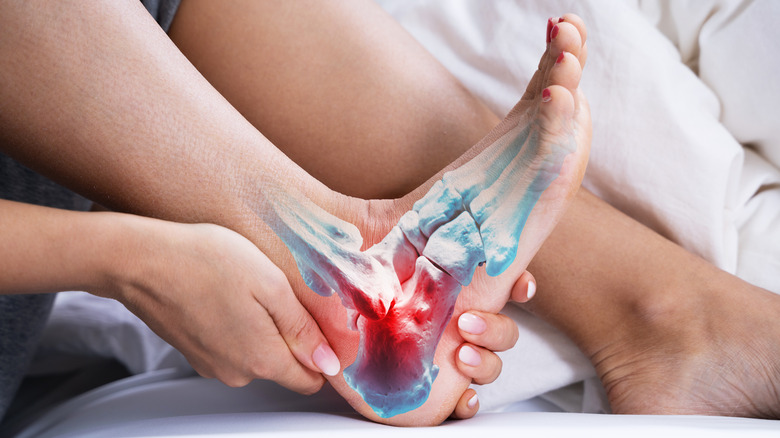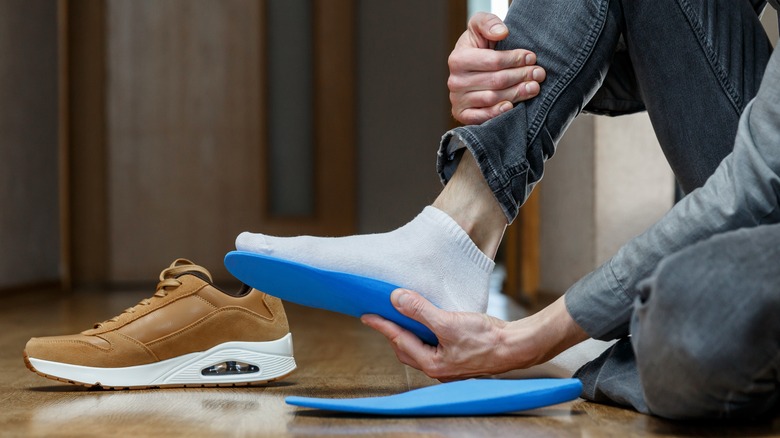How Achilles Tendonitis Is Treated
Crucial in our ability to walk, run, and more, the Achilles tendons are the biggest and strongest of the body's tendons, able to support over 1,000 pounds of weight, according to UT Southwestern Medical Center. Extending from the heel bones to the calf muscles behind our ankles, the Achilles tendons may be strong, but they don't get much in the way of blood flow. For this reason, these tendons are particularly susceptible to damage from injury and are fairly slow to heal.
Often seen in relation to sports injuries, research published in StatPearls reveals that for athletes, the Achilles tendon has a lifetime injury incidence rate of roughly 24%. One such condition commonly associated with the Achilles tendon is Achilles tendonitis, characterized by inflammation of the tendon due to injury or overuse, explains OrthoInfo. Those with the condition may experience swelling, tendon thickening, or varying degrees of pain along the area in the morning time, as well as during or after physical activity.
At-home treatment for Achilles tendonitis
Those who may be particularly prone to the condition include older adults, those with certain health conditions such as high blood pressure, as well as those with physical issues such as flat arches or tight calves (via Mayo Clinic). Wearing ill-fitted shoes during physical activity can also increase one's risk for Achilles tendonitis.
Most often, cases of Achilles tendonitis can be managed with at-home care, reports the Mayo Clinic. Such treatment methods include implementing physical therapy exercises or wearing orthotic devices such as shoe inserts to reduce strain on the area. Research published in StatPearls also highlights reducing exercise and the use of NSAIDs as additional treatment methods. Researchers also point out that cases of Achilles tendonitis that don't improve with initial treatment measures may benefit from extracorporeal shock wave therapy, which has been shown to decrease patient pain by as much as 60%. In the event that the condition does not respond to treatment after a period of six months, patients may benefit from surgical intervention. This is especially important for cases in which the tendon has suffered a rupture exceeding 50%.


